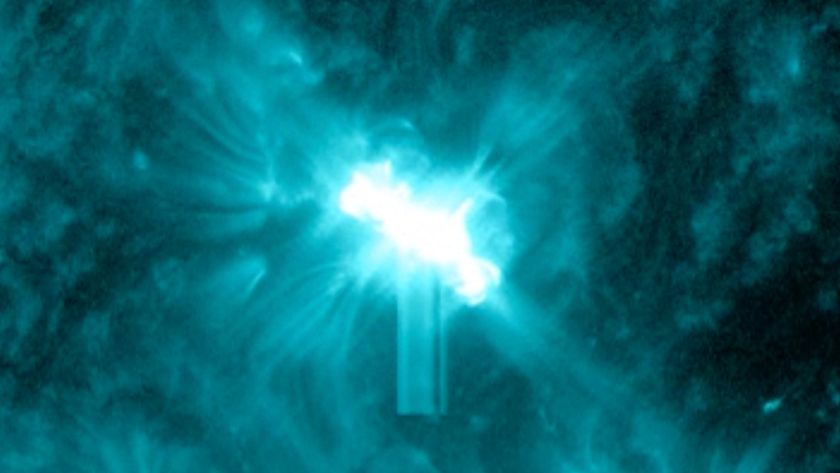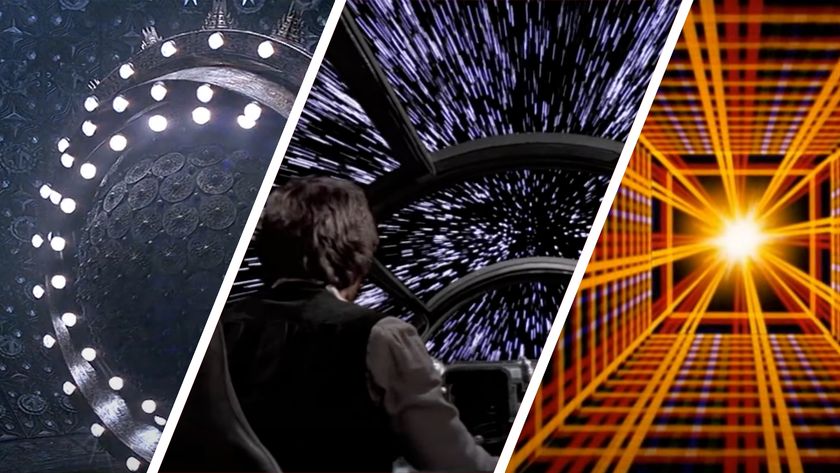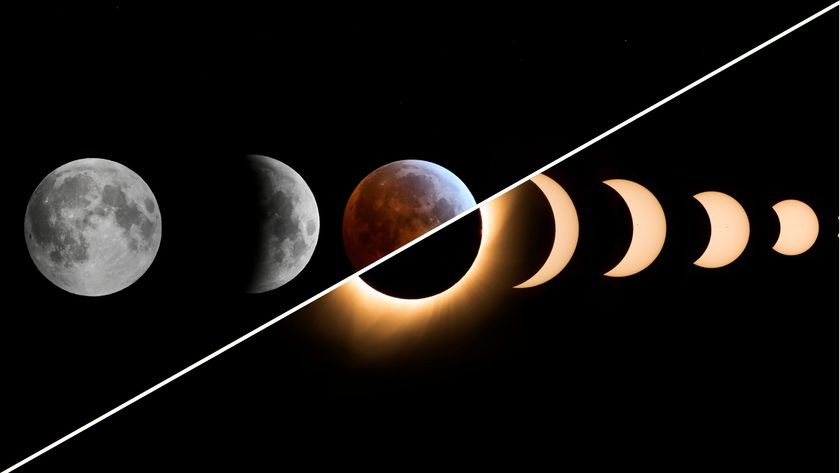What is the biggest thing in the universe?
The biggest thing in the universe is 10 billion light-years across.
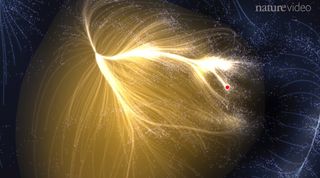
The biggest single entity that scientists have identified in the universe is a supercluster of galaxies called the Hercules-Corona Borealis Great Wall. It's so wide that light takes about 10 billion years to move across the entire structure. For perspective, the universe is only 13.8 billion years old.
What does "big" mean in space?
Space is all about large distances and objects.
Earth is big to us, about 24,901 miles (40,075 kilometers) in circumference at the equator. But based on the cosmic scheme of things, Earth is tiny. Even in our own solar system, we are easily dwarfed by the planet Jupiter (which could fit more than 1,300 Earths inside) and our sun (which could fit more than a million Earths inside of it).
And while our sun seems huge, it looks puny compared to the biggest stars we know of. The sun is a G-type star or a yellow dwarf and a pretty average size on the cosmic scale. Some "hypergiant" stars are much, much larger. Perhaps the biggest star known is UY Scuti, which could fit more than 1,700 of our suns. (Some estimates for the size of UY Scuti put it lower on the list, but there are other gigantic stars of a similar size.) But while in diameter and circumference UY Scuti is enormous, it's only about 30 times more massive than our sun: volume and mass don't necessarily correlate in space.
Related: Smallest, densest white dwarf ever discovered packs the sun's mass into a moon-size stellar corpse
Even more massive objects to consider are black holes and, in particular, the supermassive black holes that typically reside in the center of a galaxy. For example, the Milky Way hosts one that is about 4 million times the mass of the sun. One of the biggest supermassive black holes ever found resides in NGC 4889 and contains 21 billion times the mass of the sun. However, even the most massive black holes aren't particularly large, since this type of structure is the densest in the universe.
Nebulas, or vast clouds of gas that often condense to become new stars, also have impressively large sizes. NGC 604 in the Triangulum Galaxy is commonly cited as one of the largest; it's roughly 1,520 light-years across.
Galaxies are collections of star systems and everything inside those systems: black holes, planets, stars, asteroids, comets, gas, dust and more. Our own Milky Way, if considered as one object, is about 100,000 light-years across. Scientists struggle to characterize the largest galaxies, because they don't really have precise boundaries, but the largest galaxies we know of are millions of light-years across.
The biggest known galaxy, first described in a 1990 study from the journal Science, is IC 1101, which stretches as wide as 4 million light-years across, according to NASA.
Galaxies are often bound to each other gravitationally in groups that are called galaxy clusters. (The Milky Way, for example, is part of the small Local Group that comprises about two dozen galaxies, including the Andromeda Galaxy.) Astronomers once thought that these structures were the biggest things out there. In the 1980s, however, scientists realized that groups of galaxy clusters can also be connected by gravity, forming a supercluster, the largest class of objects in the universe.
What is the Hercules-Corona Borealis Great Wall?
Right now, scientists' best candidate for the biggest supercluster known in the universe is the Hercules-Corona Borealis Great Wall, although astronomers have spent almost a decade debating the structure.
In 2013, a research team led by Istvan Horvath of the National University of Public Service in Hungary announced the Hercules-Corona Borealis Great Wall at the 7th Huntsville Gamma-Ray Burst Symposium.
The scientists had been studying brief cosmic phenomena known as gamma-ray bursts, which astronomers believe come from supernovas, or massive stars that explode at the end of their lifetimes. Gamma-ray bursts are thought to be a good indication of where huge masses of stuff lie in the universe, because big stars tend to congregate in denser neighborhoods. Horvath and his colleagues found gamma-rays particularly concentrated about 10 billion light-years away in the direction of the Hercules and Corona Borealis constellations.
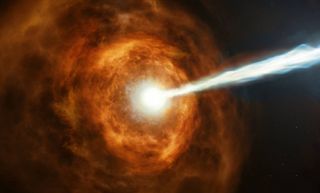
But it's a puzzle as to just how the big structure came to be. According Horvath, this structure appeared to go against a principle of cosmology, or how the universe formed and evolved. The principle in question holds that matter should be uniform when seen at a large enough scale, but the cluster is not uniform.
"I would have thought this structure was too big to exist. Even as a coauthor, I still have my doubts," Jon Hakkila, an astronomy researcher at the College of Charleston in South Carolina, said in a 2014 press release. But, he said, there was only a very small chance — far less than 1% — that the researchers saw a random number of gamma-rays in that location.
"Thus, we believe that the structure exists," he added. "There are other structures that appear to violate universal homogeneity: the Sloan Great Wall and the Huge Large Quasar Group ... are two. Thus, there may very well be others, and some could indeed be bigger. Only time will tell."
Related: Astronomers discover South Pole Wall, a gigantic structure stretching 1.4 billion light-years across
One 2020 paper from the journal Monthly Notices of the Royal Astronomical Society calls the existence of the Hercules-Corona Borealis Great Wall "doubtful at best," pointing out that it could be a statistical blip in very complicated data. But the original team that first proposed the existence of the supercluster supported their original findings in a 2020 paper of their own in the same journal.
What are the largest things in our solar system?
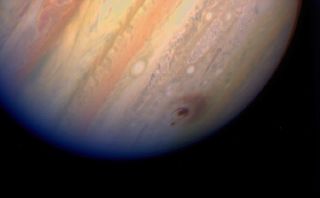
While the solar system is puny compared to the scale of the Hercules-Corona Borealis Great Wall, here is a bonus list of superlative objects in our own neighborhood.
- Largest planet: Jupiter, roughly 88,846 miles (142,984 km) across, about 11 times the diameter of the Earth.
- Largest moon: Ganymede, which orbits Jupiter, is roughly 3,273 miles (5,268 km) in diameter and is a little larger than the planet Mercury.
- Tallest mountain: Olympus Mons on Mars, roughly 15 miles (25 km) high and three times the height of Mount Everest on Earth.
- Largest canyon: Valles Marineris on Mars, more than 1,865 miles (3,000 km) long, as much as 370 miles (600 km) across, and 5 miles (8 km) deep.
- Largest crater: Utopia Planitia on Mars, which has an estimated diameter of 2,050 miles (3,300 km). It was the general landing area of the Viking 2 spacecraft that landed there in 1976.
- Largest asteroid: Vesta, which is 330 miles (530 km) across. It is located in the asteroid belt between Mars and Jupiter.
- Largest dwarf planet: Pluto is the largest dwarf planet, with a diameter of 1,473 miles (2,370 km). It was once thought to be smaller than dwarf planet Eris, but Pluto's measurements were confirmed up close by the New Horizons spacecraft in 2015.
Additional resources & reading
If you're boggled by the scale here, one place to explore distances and size in space is Google's 100,000 Stars site, which they call an "interactive visualization of the stellar neighborhood." It will take you on a tour of our solar system and our galaxy, which is much smaller than a supercluster but still enough to blow your mind. For kids (and adults!) who want to know more about superclusters, check out the NASA site Imagine the Universe for more galaxy clusters near us. And if you want to dive into a book, read more in astrophysicist Hélène Courtois' 2019 book Finding Our Place in the Universe: How We Discovered Laniakea - the Milky Way's Home.
Bibliography
- Christian, Sam. "Re-Examining the Evidence of the Hercules-Corona-Borealis Great Wall." Monthly Notices of the Royal Astronomical Society 495, no. 4 (July 11, 2020): 4291–96. https://doi.org/10.1093/mnras/staa1448.
- Horvath, I., J. Hakkila, and Z. Bagoly. "The Largest Structure of the Universe, Defined by Gamma-Ray Bursts," November 1, 2013. https://ui.adsabs.harvard.edu/abs/2013arXiv1311.1104H.
- Horvath, I, D Szécsi, J Hakkila, Á Szabó, I I Racz, L V Tóth, S Pinter, and Z Bagoly. "The Clustering of Gamma-Ray Bursts in the Hercules–Corona Borealis Great Wall: The Largest Structure in the Universe?" Monthly Notices of the Royal Astronomical Society 498, no. 2 (August 22, 2020): 2544–53. https://doi.org/https://doi.org/10.1093/mnras/staa2460.
- Menchaca, Ron. "College of Charleston Professor Makes Scientific Discovery of Epic Proportions." The College Today (blog), July 15, 2014. http://139.177.200.56/2014/07/15/college-charleston-professor-makes-scientific-discovery-epic-proportions/.
- NASA, "Our Milky Way Galaxy: How Big is Space?" April 2, 2019. https://exoplanets.nasa.gov/blog/1563/our-milky-way-galaxy-how-big-is-space/
- Uson, Juan M., Stephen P. Boughn, and Jeffrey R. Kuhn. "The Central Galaxy in Abell 2029: An Old Supergiant." Science, October 26, 1990. https://doi.org/10.1126/science.250.4980.539.
Join our Space Forums to keep talking space on the latest missions, night sky and more! And if you have a news tip, correction or comment, let us know at: community@space.com.
Get the Space.com Newsletter
Breaking space news, the latest updates on rocket launches, skywatching events and more!

Elizabeth Howell (she/her), Ph.D., was a staff writer in the spaceflight channel between 2022 and 2024 specializing in Canadian space news. She was contributing writer for Space.com for 10 years from 2012 to 2024. Elizabeth's reporting includes multiple exclusives with the White House, leading world coverage about a lost-and-found space tomato on the International Space Station, witnessing five human spaceflight launches on two continents, flying parabolic, working inside a spacesuit, and participating in a simulated Mars mission. Her latest book, "Why Am I Taller?" (ECW Press, 2022) is co-written with astronaut Dave Williams.
- Vicky SteinContributing Writer


